Did you know that peperomia plants are an incredibly diverse group of small houseplants with over 1000 species? These easy-to-care-for plants come in a wide range of shapes, sizes, and colors, making them the perfect addition to any home or office.
In this blog post, we'll be exploring various peperomia plants varieties and sharing helpful tips on how to care for them. So join us in this journey and discover the fascinating world of peperomia plants!
Short Summary
Types of peperomia plants for home gardens.
Popular and unusual varieties to add a touch of uniqueness to any indoor space.
Care tips & common problems/solutions for keeping your plants healthy.
Peperomia Plant Overview
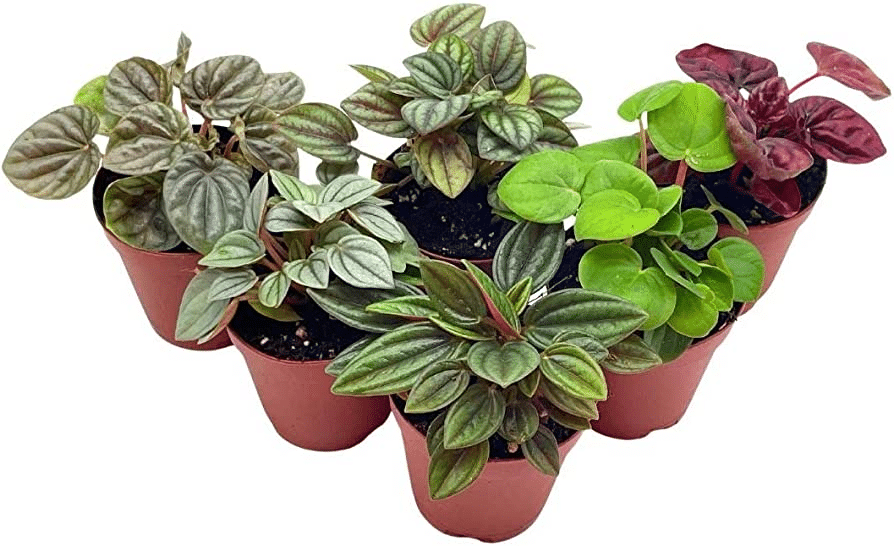
Peperomia plants, also known as radiator plants, are a diverse group of small, easy-to-care-for houseplants that belong to the family Piperaceae. Hailing from tropical and subtropical regions, this fascinating genus boasts over 1000 species, each with its unique features.
From the dark green leaves of the Baby Rubber Plant (Peperomia obtusifolia) to the heart-shaped leaves of the Watermelon Peperomia (Peperomia argyreia), there's a peperomia plant to suit everyone's taste.
These versatile plants come in various shapes, sizes, and colors, making them ideal for any indoor space. Some popular varieties include Peperomia caperata, known as Emerald Ripple Peperomia, and Peperomia clusiifolia, with its striking variegated foliage.
Moreover, unusual peperomia varieties like Peperomia graveolens, known as Ruby Glow Peperomia, and Peperomia prostrata, commonly called String of Turtles, can add a touch of uniqueness to your indoor garden.
Now, let's dive deeper into the world of peperomia and explore some popular and unusual varieties!
Popular Peperomia Varieties
Some of the most popular peperomia varieties include Baby Rubber Plant (Peperomia obtusifolia), Watermelon Peperomia (Peperomia argyreia), and Raindrop Peperomia (Peperomia polybotrya). Each of these charming plants has its unique features and care requirements, making them perfect for various indoor spaces.
Let's take a closer look at each of these popular peperomia varieties to learn more about their characteristics and care tips.
Baby Rubber Plant (Peperomia obtusifolia)
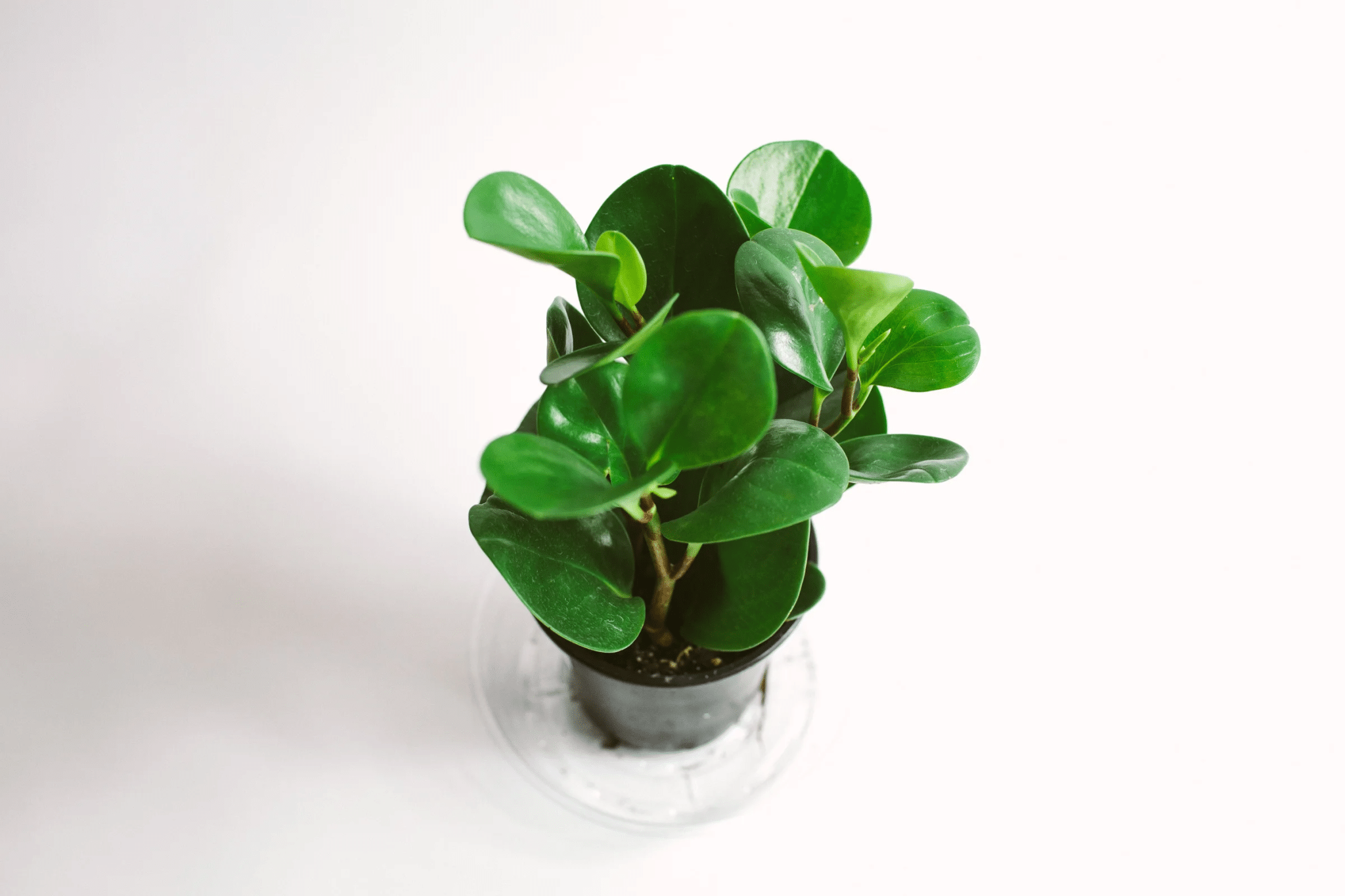
The Baby Rubber Plant (Peperomia obtusifolia) is a small, bushy plant known for its thick, oval-shaped, succulent-like leaves.
This compact plant can reach up to 12 inches in height and is an excellent choice for both beginner and experienced plant enthusiasts due to its low-maintenance nature.
To care for your Baby Rubber Plant, place it in a spot with medium light and water it when the soil dries out. It will reward you with its lush, glossy green leaves and easy-going nature.
Watermelon Peperomia (Peperomia argyreia)
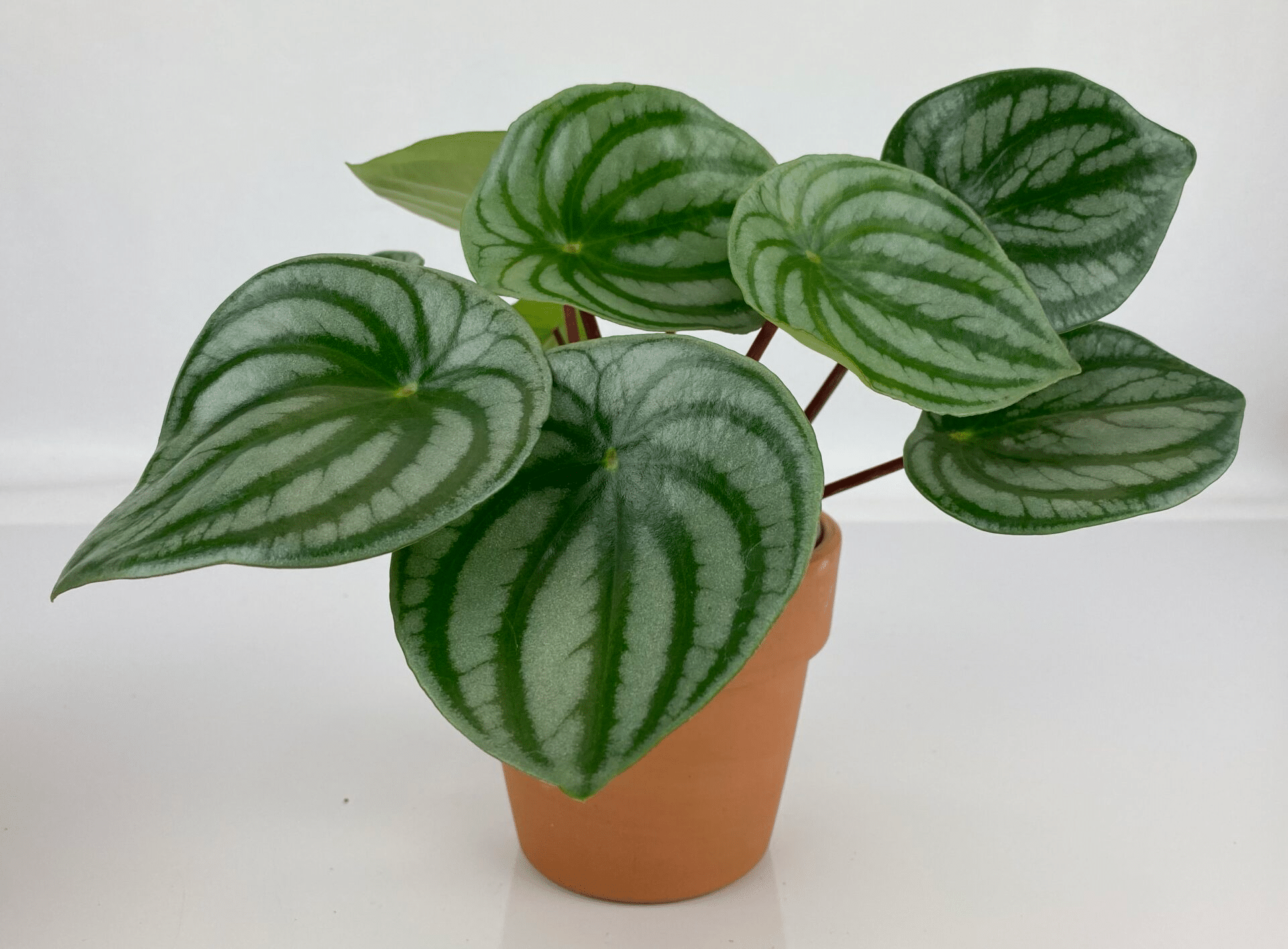
Watermelon Peperomia (Peperomia argyreia) is another popular variety, characterized by its standout striped leaves and bright red stems. This compact plant can grow up to 8 inches in height, making it an excellent choice for small spaces or as a tabletop decoration.
To care for your Watermelon Peperomia, provide it with medium to bright light, and water it regularly, ensuring the soil remains moist but not soggy. This delightful plant will surely become a conversation starter in your home with its striking foliage.
Raindrop Peperomia (Peperomia polybotrya)
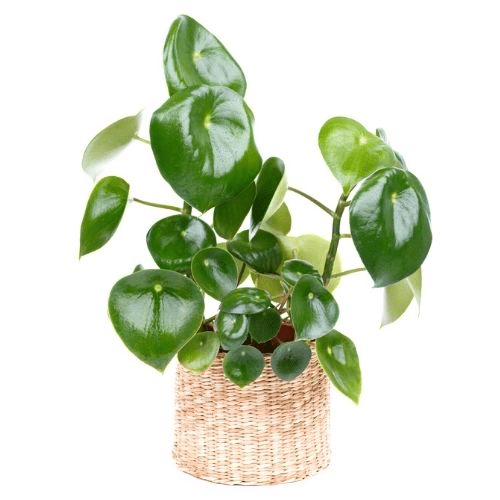
Raindrop Peperomia (Peperomia polybotrya) is a charming plant with teardrop-shaped, slightly larger leaves than other peperomia varieties. This compact plant can reach up to 8 inches in height, making it perfect for small spaces or as a desk companion.
Raindrop Peperomia thrives in bright, indirect light and requires watering when the top inch of soil is dry. With its unique leaf shape and easy-care requirements, Raindrop Peperomia is sure to become a favorite in your indoor garden.
Unusual Peperomia Varieties
If you're looking for something a bit more unique and eye-catching, unusual peperomia varieties such as Peperomia Rosso (Peperomia caperata ‘Rosso'), Ruby Glow Peperomia (Peperomia graveolens), and Felted Pepperface (Peperomia incana) might be just what you need.
These distinctive plants offer a fresh twist on the classic peperomia look and can add a touch of flair to your indoor garden.
Let's explore these unusual varieties and learn more about their features and care tips.
Peperomia Rosso (Peperomia caperata ‘Rosso')
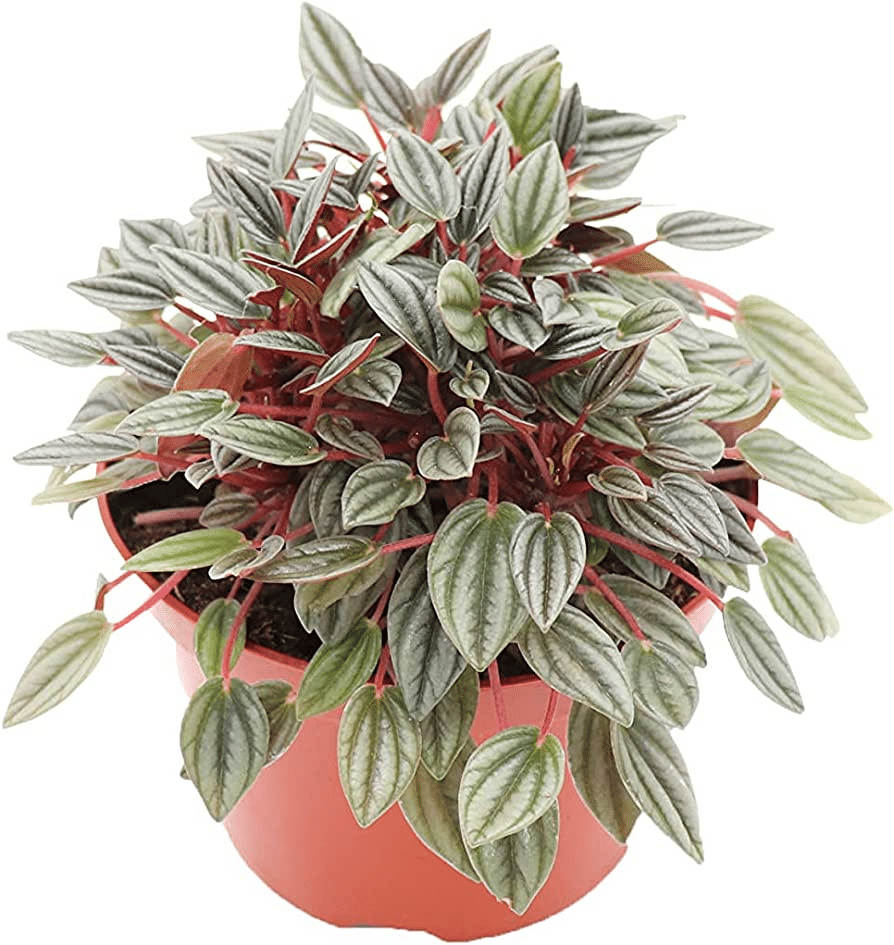
Peperomia Rosso, or Peperomia caperata ‘Rosso', is an ornamental succulent with thick, folded green leaves on top and red on the bottom. This striking plant is perfect for adding a splash of color to your indoor space.
To care for your Peperomia Rosso, provide it with bright, indirect light and water it sparingly, allowing the soil to dry out between waterings. With its vibrant foliage and easy-care nature, Peperomia Rosso is sure to become a favorite in your home.
Ruby Glow Peperomia (Peperomia graveolens)
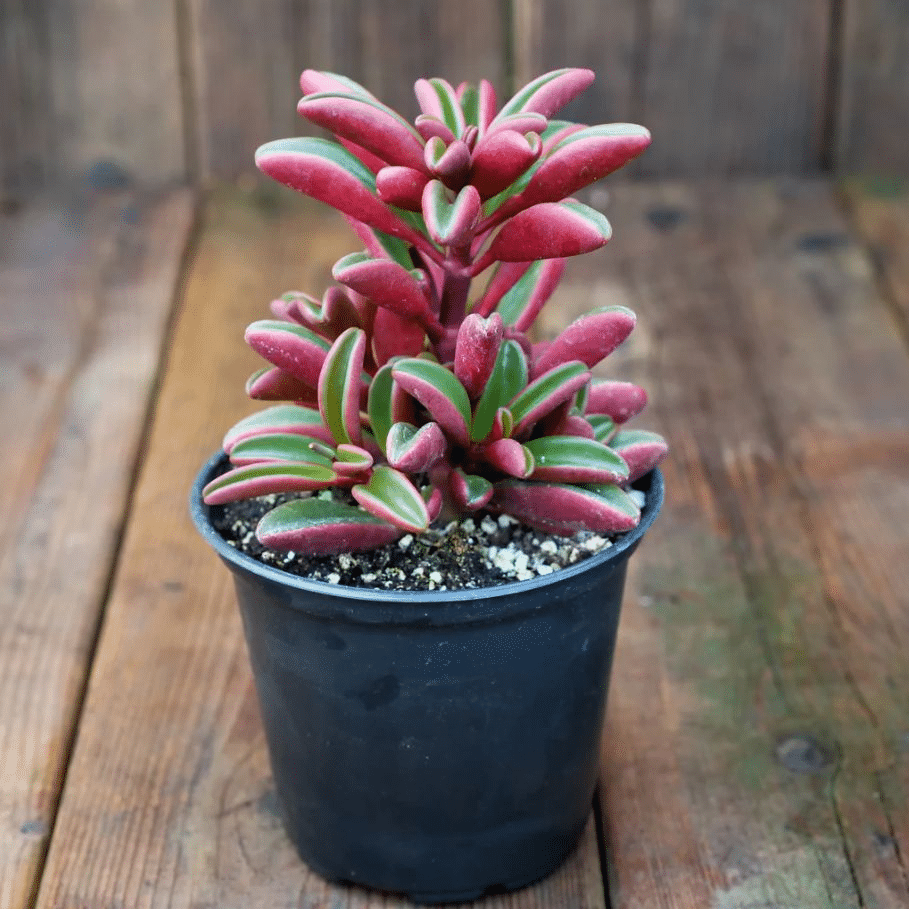
Ruby Glow Peperomia (Peperomia graveolens) is a small, ornamental succulent with thick, folded green leaves on top and red on the bottom, resembling the appearance of the Peperomia Rosso. This perennial succulent is native to high-altitude rock faces in Ecuador and relatively easy to care for.
To care for your Ruby Glow Peperomia, provide a fairly dry climate, avoid overwatering, and ensure it receives bright, dappled sunlight. This unique plant will certainly add a touch of elegance to any indoor space.
Felted Pepperface (Peperomia incana)

Felted Pepperface (Peperomia incana) is a rare variant of peperomia native to Jamaica, featuring red stems and scarlet red on the leaf undersides. This distinctive plant adds a pop of color to your indoor garden and is sure to catch the eye.
To care for your Felted Pepperface, provide it with bright, indirect light and water it regularly, ensuring the soil remains moist but not soggy. With its vibrant foliage and easy-care nature, the Felted Pepperface is a fantastic addition to any indoor garden.
Variegated Peperomias

Variegated peperomias are another exciting group of peperomia plants, boasting colorful leaves that can brighten up any indoor space.
Some popular variegated peperomias include Variegated Peperomia obtusifolia, Peperomia orba ‘Variegata', and Peperomia clusiifolia ‘Ginny'. These stunning plants offer a vibrant twist on the classic peperomia look and are sure to make a statement in your home.
Let's delve into the details of these variegated varieties and learn more about their care requirements.
Variegated Peperomia obtusifolia
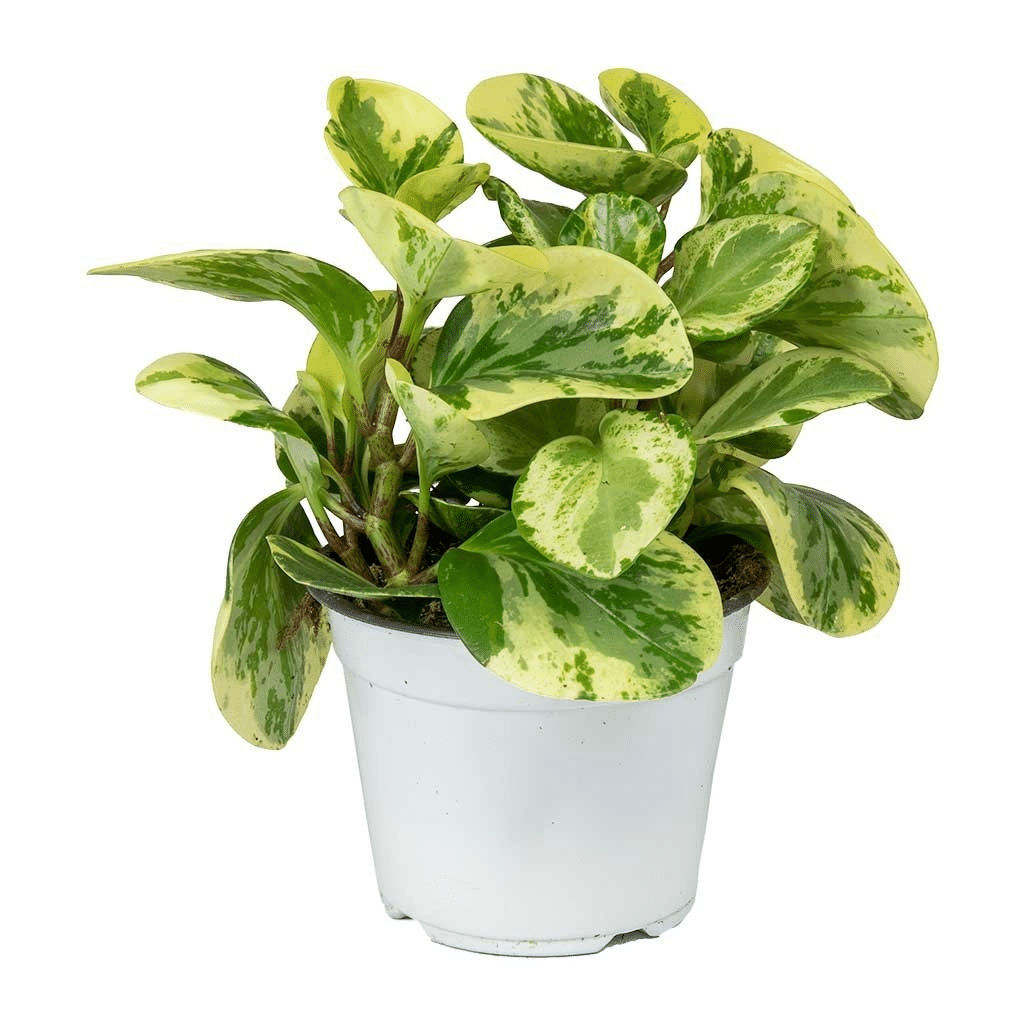
Variegated Peperomia obtusifolia is a compact plant native to South American rainforests, featuring glossy, fleshy leaves with eye-catching variegation. This low-maintenance plant can grow up to 12 inches tall and is perfect for both novice and experienced plant enthusiasts.
To care for your Variegated Peperomia obtusifolia, place it in a spot with medium light and water it when the soil dries out. Its stunning foliage and easy-going nature make it a beautiful addition to any indoor space.
Peperomia orba ‘Variegata'
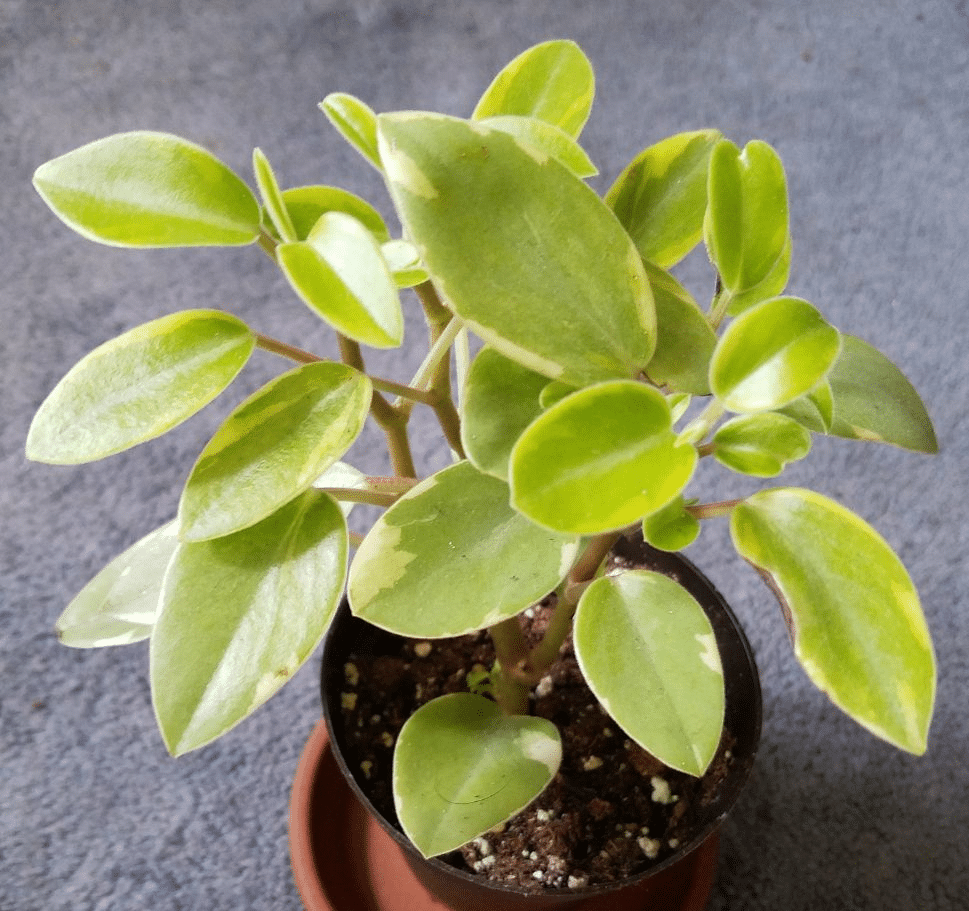
Peperomia orba ‘Variegata', a succulent-like flowering plant, is another beautiful variegated peperomia variety. It features glossy green leaves with pale yellow edges and can grow quite wide, up to 12 inches.
This tropical perennial grows to a height of 4 to 6 inches and a width of 6 to 12 inches, making it perfect for small spaces or as a tabletop decoration. To care for your Peperomia orba ‘Variegata', provide it with bright, indirect light and water it when the top inch of soil is dry.
Peperomia clusiifolia ‘Ginny'

Peperomia clusiifolia ‘Ginny' is a striking variegated peperomia variety with elongated oval leaves featuring green blotches in the center, surrounded by creamy-white patterns and red edges on the leaf margins.
This unique plant prefers lots of bright light but should be kept away from direct sunlight to prevent the leaves from getting burned. With its colorful foliage and easy-care requirements, Peperomia clusiifolia ‘Ginny' is a fantastic addition to your indoor plant collection.
Peperomias for Hanging Baskets
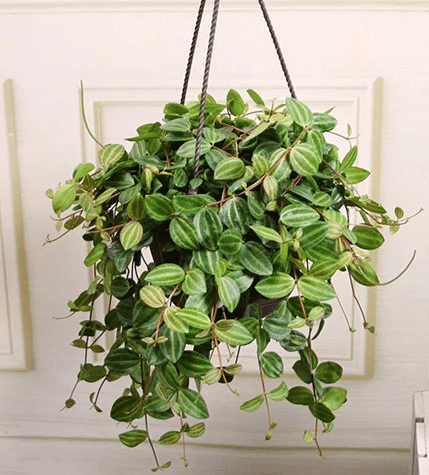
Peperomias are not only perfect for tabletops and small spaces, but some varieties are also ideal for hanging baskets, adding a touch of greenery to your indoor space from above.
These trailing peperomias include String of Turtles (Peperomia prostrata), Trailing Jade (Peperomia rotundifolia), and Cupid Peperomia (Peperomia scandens).
Each of these charming plants has its unique features and care requirements, making them perfect for adding a touch of elegance to your home. Let's take a closer look at each of these peperomias for hanging baskets.
String of Turtles (Peperomia prostrata)
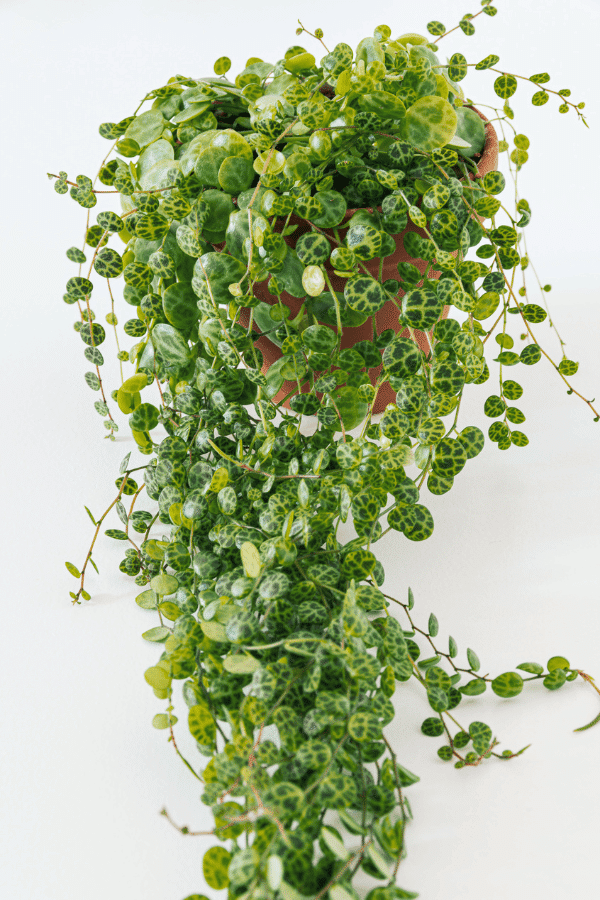
The String of Turtles (Peperomia prostrata) is a small succulent with tiny, fleshy leaves that resemble turtle shells, making it an adorable addition to any hanging basket. This low-maintenance houseplant is easy to care for and thrives in bright, indirect light. Simply water it when the soil is dry, and you'll be rewarded with a lush, trailing display of charming “turtles”.
However, be gentle with this delicate plant, as its leaves and stems can be easily damaged.
Trailing Jade (Peperomia rotundifolia)
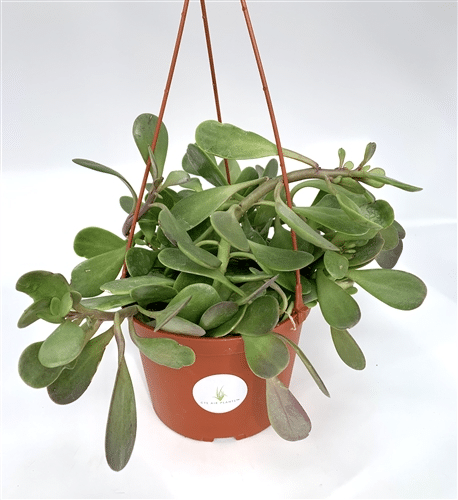
Trailing Jade (Peperomia rotundifolia) is a type of trailing peperomia plant with round, glossy green leaves that are thick and fleshy, resembling succulent leaves. This plant is native to South American rainforests and requires a well-draining, organic-rich, aerated soil mix to thrive.
To care for your Trailing Jade, provide it with bright, indirect light and water it when the soil is almost dry. With its attractive foliage and easy-care nature, Trailing Jade is an excellent choice for hanging baskets.
Cupid Peperomia (Peperomia scandens)
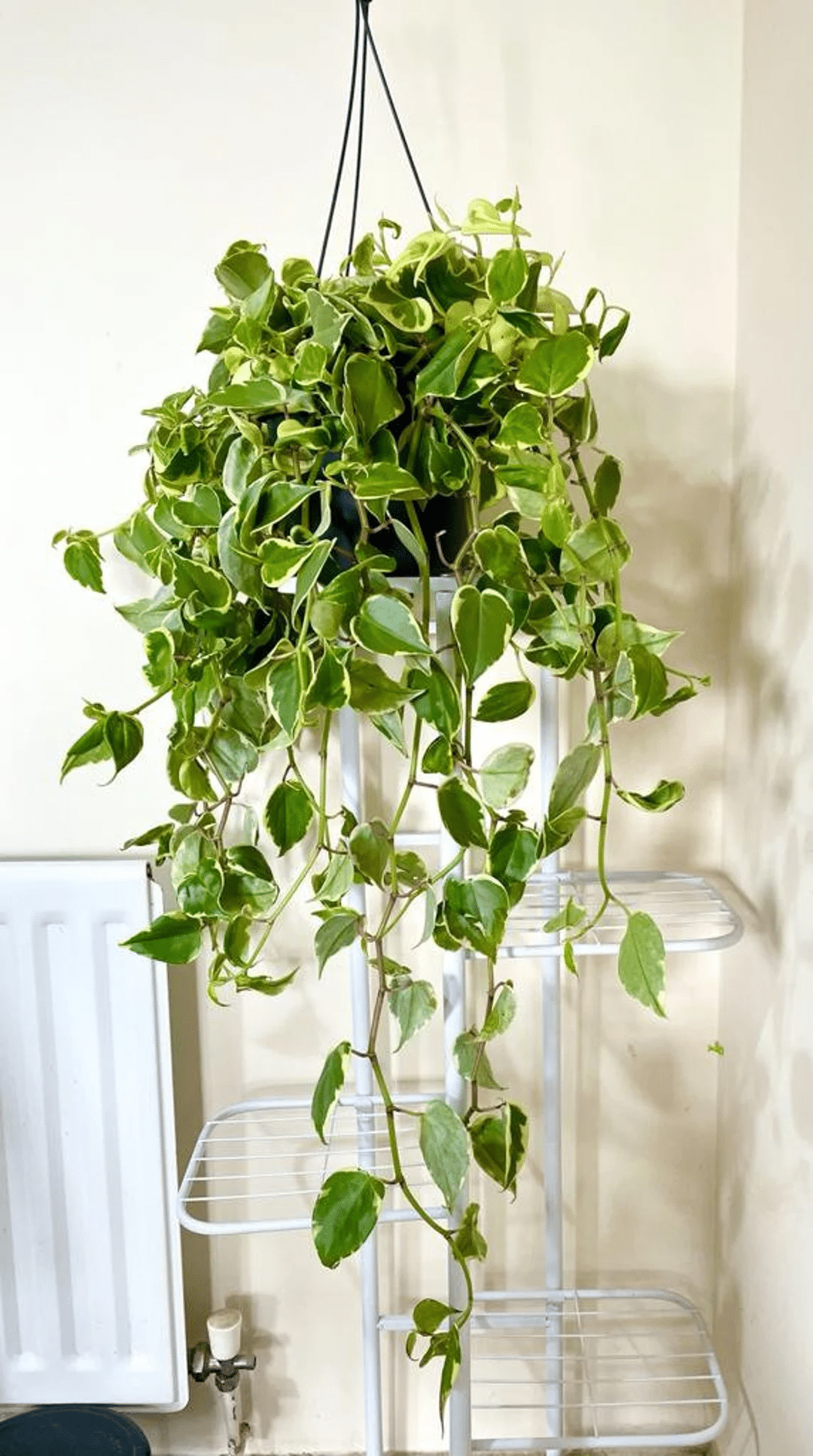
Cupid Peperomia (Peperomia scandens) is a trailing epiphyte with long vines and green heart-shaped leaves, perfect for adding a touch of romance to your hanging basket displays. This easy-going plant requires medium to bright indirect light and thrives in warm, humid environments.
To care for your Cupid Peperomia, water it when the soil is almost dry, and you'll enjoy a lush, trailing display of love-inspired foliage. Plus, it's pet-safe, making it an excellent choice for pet owners.
Succulent-Like Peperomias

For those who appreciate the beauty and low-maintenance nature of succulents, succulent-like peperomias are an excellent choice. These plants resemble succulents in appearance and care requirements, offering the best of both worlds.
Some succulent-like peperomias include Pincushion Peperomia (Peperomia ferreyrae), Prayer Pepper (Peperomia dolabriformis), and Ruby Cascade Peperomia (Peperomia rotundifolia ‘Ruby Cascade').
Let's explore these intriguing varieties and learn about their care tips.
Pincushion Peperomia (Peperomia ferreyrae)
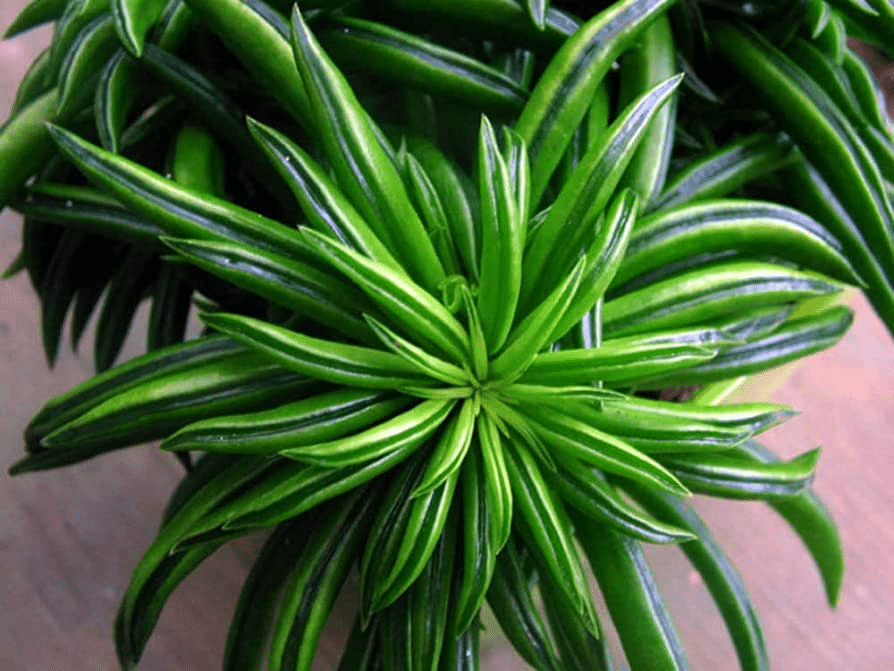
Pincushion Peperomia (Peperomia ferreyrae) is a small succulent native to Peru and South America's rainforests, with slender lime-green leaves that resemble green beans.
This easy-care plant grows up to 30 cm tall and requires well-drained soil with a high level of mineral grit, making it quite drought-tolerant.
To care for your Pincushion Peperomia, provide it with bright, indirect light, and water it sparingly, allowing the soil to dry out between waterings. This charming plant is perfect for those who love succulents and peperomia alike.
Prayer Pepper (Peperomia dolabriformis)
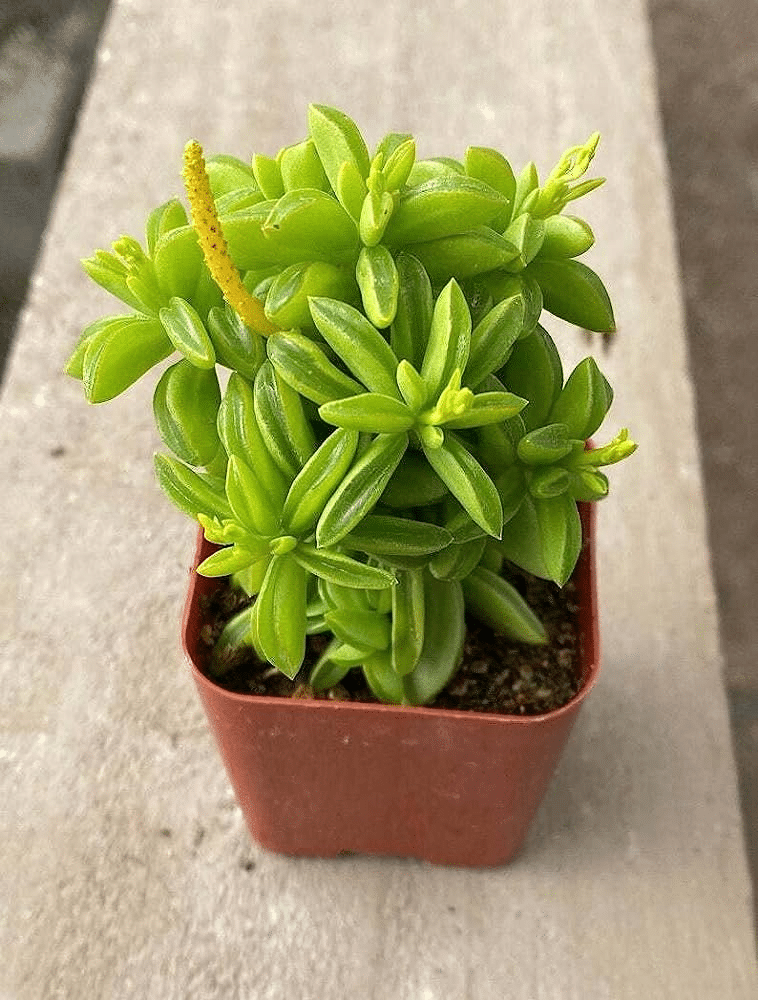
Prayer Pepper (Peperomia dolabriformis) is a perennial succulent from Peru, featuring thick, green foliage that looks like pea pods or tiny purses. This unique plant is perfect for those seeking a low-maintenance and drought-tolerant peperomia variety.
To care for your Prayer Pepper, provide it with soil that holds moisture, warm and humid air, and regular light watering with rainwater or filtered water. With its intriguing appearance and easy-care nature, Prayer Pepper is sure to become a favorite in your indoor garden.
Ruby Cascade Peperomia (Peperomia rotundifolia ‘Ruby Cascade')
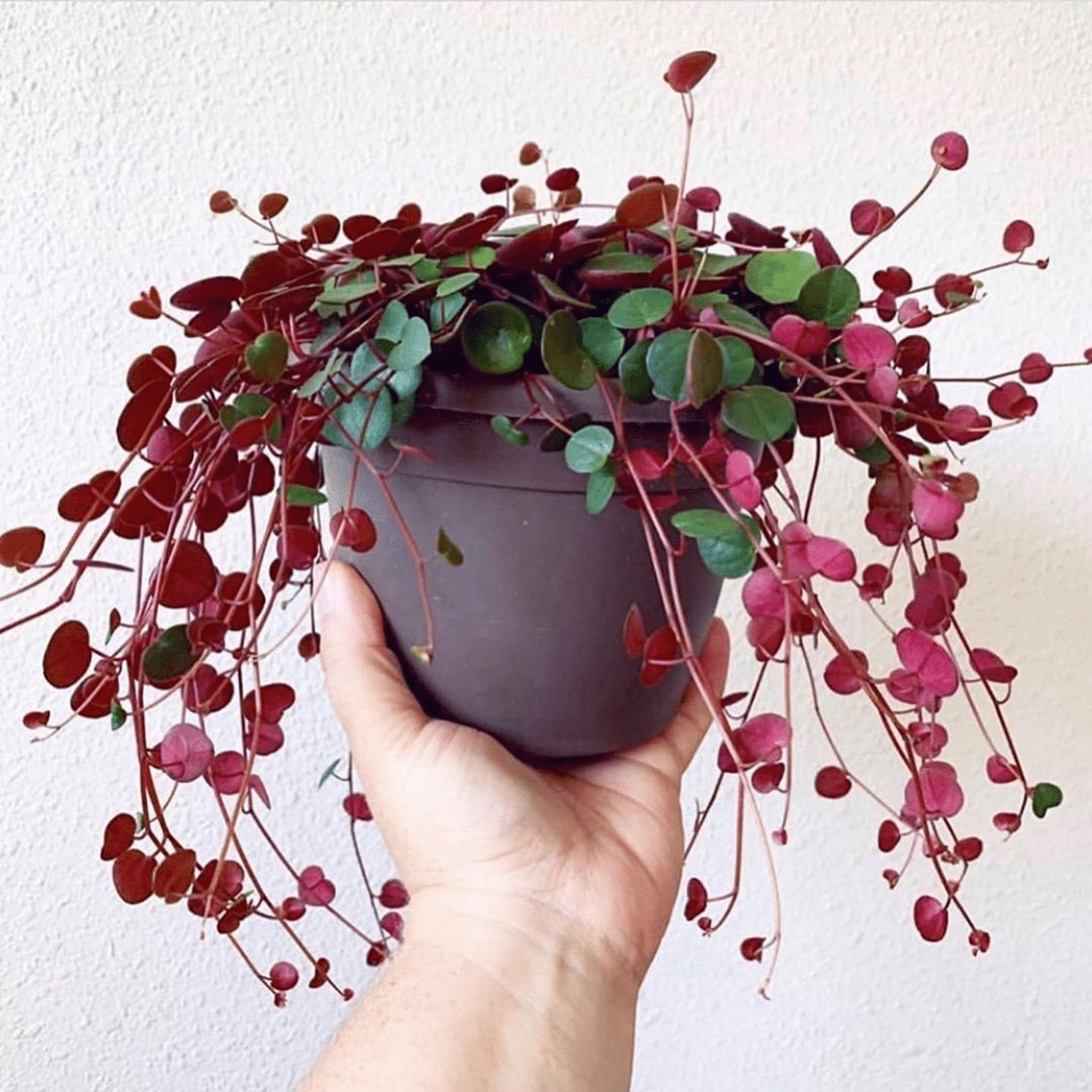
Ruby Cascade Peperomia (Peperomia rotundifolia ‘Ruby Cascade') is a vining plant with ruby-red leaves that offer a unique twist on the classic peperomia look.
This dark leaf trailing plant is part of the peperomia plant genus and requires bright, indirect light and regular watering when the top inch of soil is dry.
The Ruby Cascade Peperomia is perfect for those who appreciate the beauty of peperomias and want a plant that stands out in their indoor garden.
Peperomia Care Tips
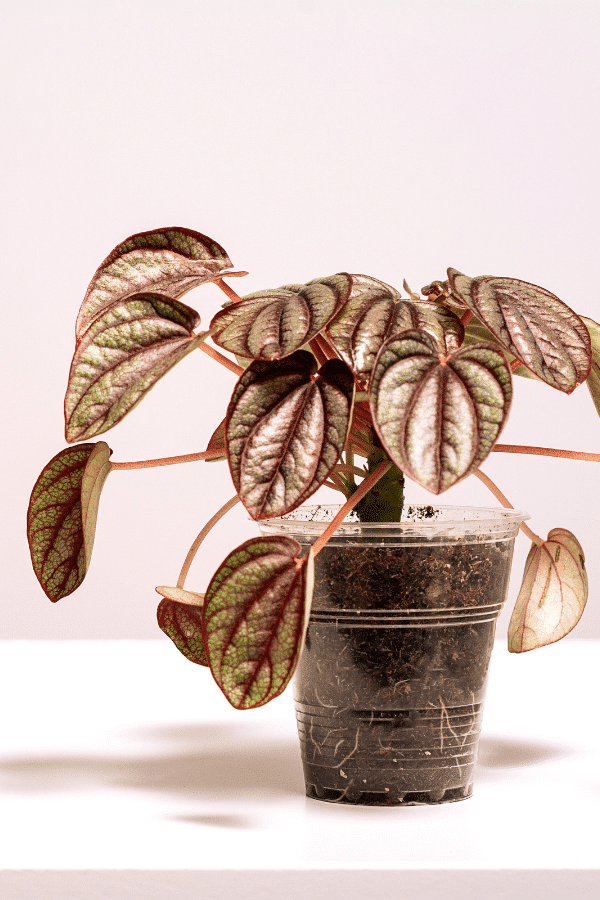
Caring for peperomia plants is generally quite simple, making them an excellent choice for both beginner and experienced plant enthusiasts. However, it's essential to understand their specific care requirements to ensure they thrive in your indoor garden.
These care tips include light requirements, watering techniques, and soil and fertilizer needs. By following these guidelines, you'll be well on your way to cultivating a healthy and happy peperomia collection.
Light Requirements

Most peperomia varieties don't require a significant amount of light to stay happy and healthy. However, some types, especially colorful cultivars, may need a bit more light to maintain their vibrant hues.
Generally, peperomia plants prefer bright, indirect light and should be kept away from windows where they might be exposed to direct sunlight. The plants need dappled sunlight to survive and thrive. This kind of light helps ensure the optimal growth of the plants.
Watering Techniques
When it comes to watering peperomia plants, less is often more. It's crucial to keep the soil moist, not soaked, to prevent overwatering and root rot. Most varieties do better with top-down watering, but some can take water from the bottom without getting too wet.
Be sure to let the soil dry out between waterings, and avoid letting your peperomia sit in standing water.
Soil and Fertilizer Needs
Peperomia plants thrive in a well-drained, organic-rich, aerated soil mix. This type of soil mix allows for proper air circulation and prevents the roots from becoming waterlogged.
As for fertilizing your peperomia plants, a light application of a balanced, all-purpose fertilizer once a month during the growing season should suffice. Be sure not to over-fertilize, as this can lead to nutrient imbalances and other issues.
Propagating Peperomia Plants
Propagating peperomia plants is an easy and rewarding process, allowing you to expand your indoor garden and share these charming plants with friends and family.
Peperomias can be propagated through stem cuttings or leaf cuttings, depending on your preference and the specific variety you're working with.
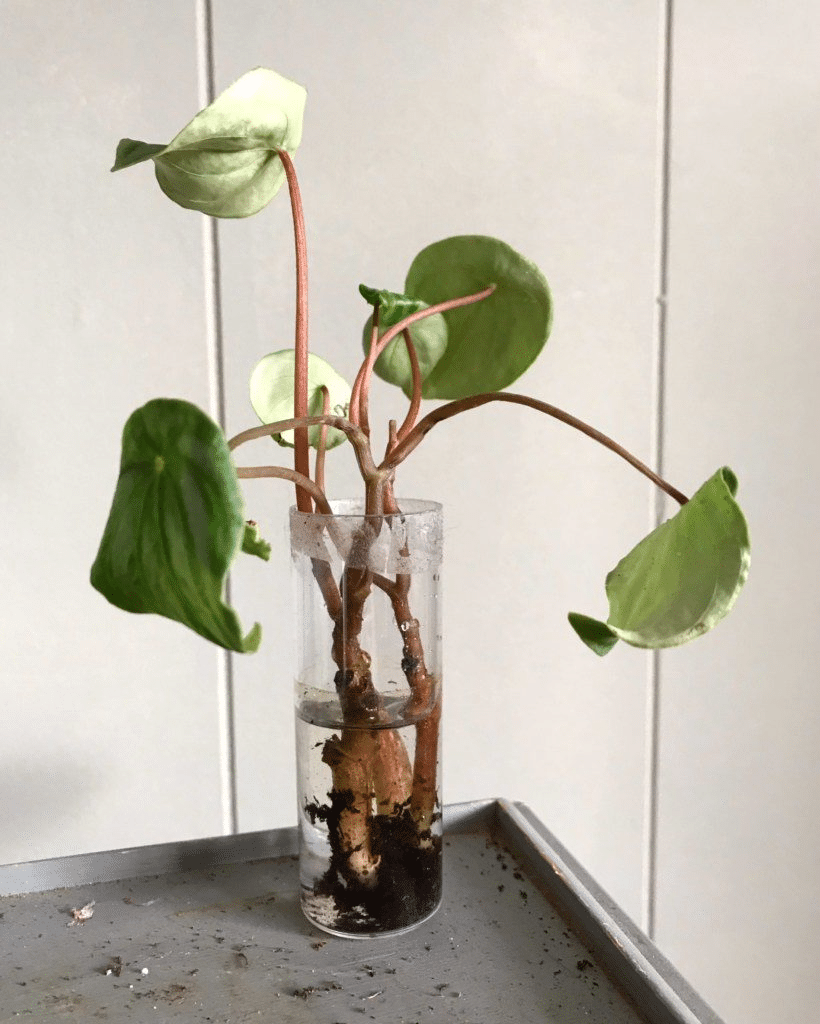
Simply snip a stem with three or more leavesjust below the bottom leaf, remove the lower leaves, and plant the cutting in moist soil or water.
Alternatively, you can take a healthy leaf, remove it from the plant, and place the leaf in moist soil or water until roots begin to form.
Common Peperomia Problems and Solutions
While peperomia plants are generally low-maintenance and easy to care for, they can still encounter some common issues, such as overwatering and root rot, pests, and yellowing leaves and other foliage problems.
By learning how to identify and address these problems, you can ensure that your peperomia plants remain healthy and vibrant.
Let's explore some common peperomia problems and their solutions.
Overwatering and Root Rot
Overwatering and root rot are common issues that can affect peperomia plants, causing wilting, yellowing leaves, and eventually, plant death.
To avoid overwatering and root rot, be sure to water your peperomia plants only when the soil is dry and ensure that the pot has proper drainage.
If you suspect your plant is suffering from root rot, remove the affected roots and repot the plant in new, dry soil to help it recover.
Pests and Diseases
Peperomia plants can occasionally be affected by pests and diseases, including mealybugs, mites, and root rot. To prevent and treat pest infestations, inspect your plants regularly for signs of damage, and remove any affected leaves or stems. Insecticidal soap or neem oil can also be applied to help manage pests.
As for diseases, maintaining proper care, including adequate watering and light, can help prevent and manage issues such as ring spot, oedema, and phytophthora rot.
Yellowing Leaves and Other Foliage Issues
Yellowing leaves, wilting, and other foliage issues can occur in peperomia plants due to various factors, such as overwatering, too much fertilizer, or too much direct sunlight.
To address these issues, ensure that your peperomia plants receive the proper care, including appropriate watering, light, and fertilization.
Adjusting these factors as needed can help restore your plants to their former glory and prevent any further issues.
Summary
In conclusion, peperomia plants are a diverse and fascinating group of houseplants that offer a wide range of shapes, sizes, and colors to suit any indoor space. From popular varieties like Baby Rubber Plant and Watermelon Peperomia to unusual and variegated types, these charming plants are sure to brighten up your home or office.
By understanding their specific care requirements, including light, watering, soil, and propagation techniques, you can ensure that your peperomia plants thrive and bring joy to your indoor garden for years to come.
So, why not explore the world of peperomia plants and find the perfect variety to brighten your indoor space?
Frequently Asked Questions
Does peperomia like sun or shade?
Overall, Peperomia plants prefer bright, indirect light but can tolerate low light conditions. Avoid exposing them to direct afternoon sunlight as this can burn the foliage.
An east or west facing window sill is ideal for them at most times of the year.
What is the most beautiful peperomia?
The most beautiful peperomia is the baby rubber plant, also called pepper face, with its lush thick green ovate leaves and upright succulent shoots.
What is the most unique peperomia?
The Peperomia Rosso, or Peperomia caperata ‘Rosso', is certainly an eye-catcher. With its deep-green foliage, it stands out due to the bright red undersides that accompany it.
This variety's leaves are also much longer and pointier, giving it a unique look among other Peperomia caperata plants. All in all, it's definitely one of the most interesting varieties of Peperomia around.


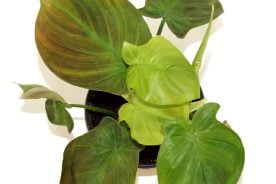


No Comments